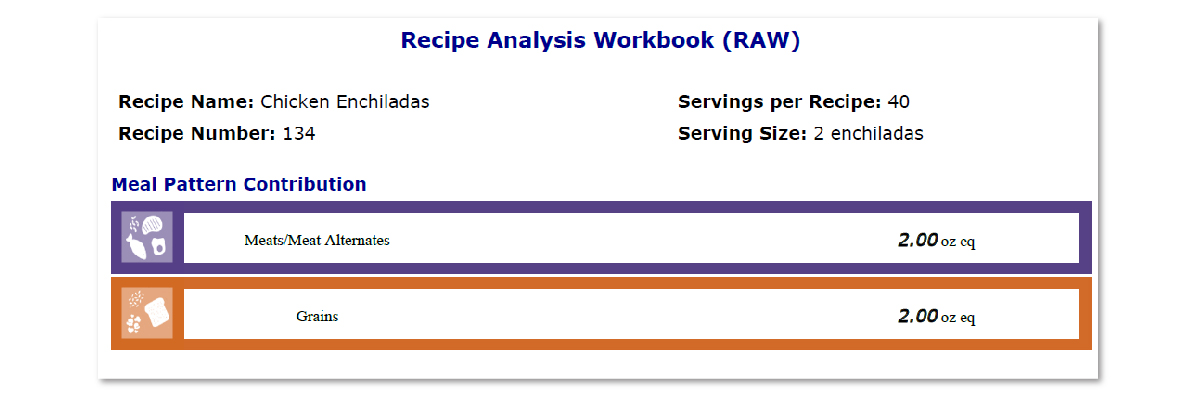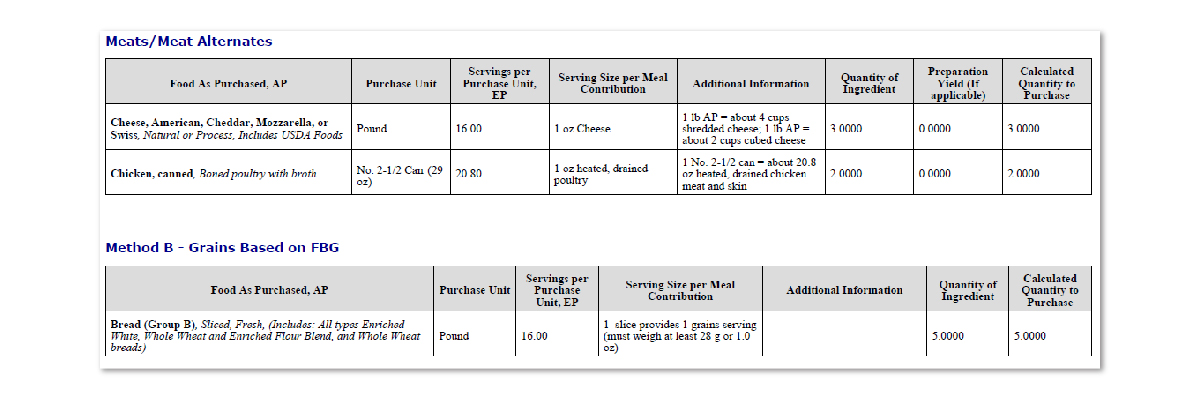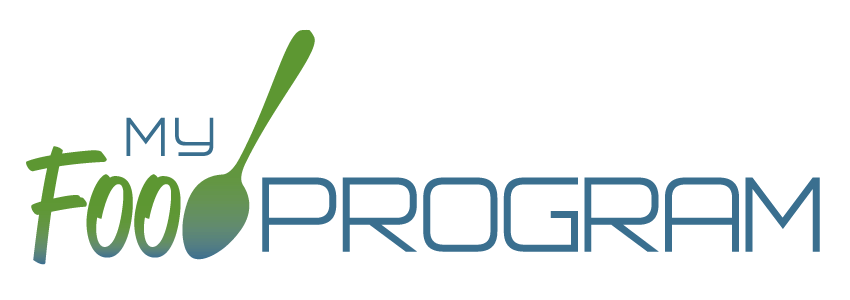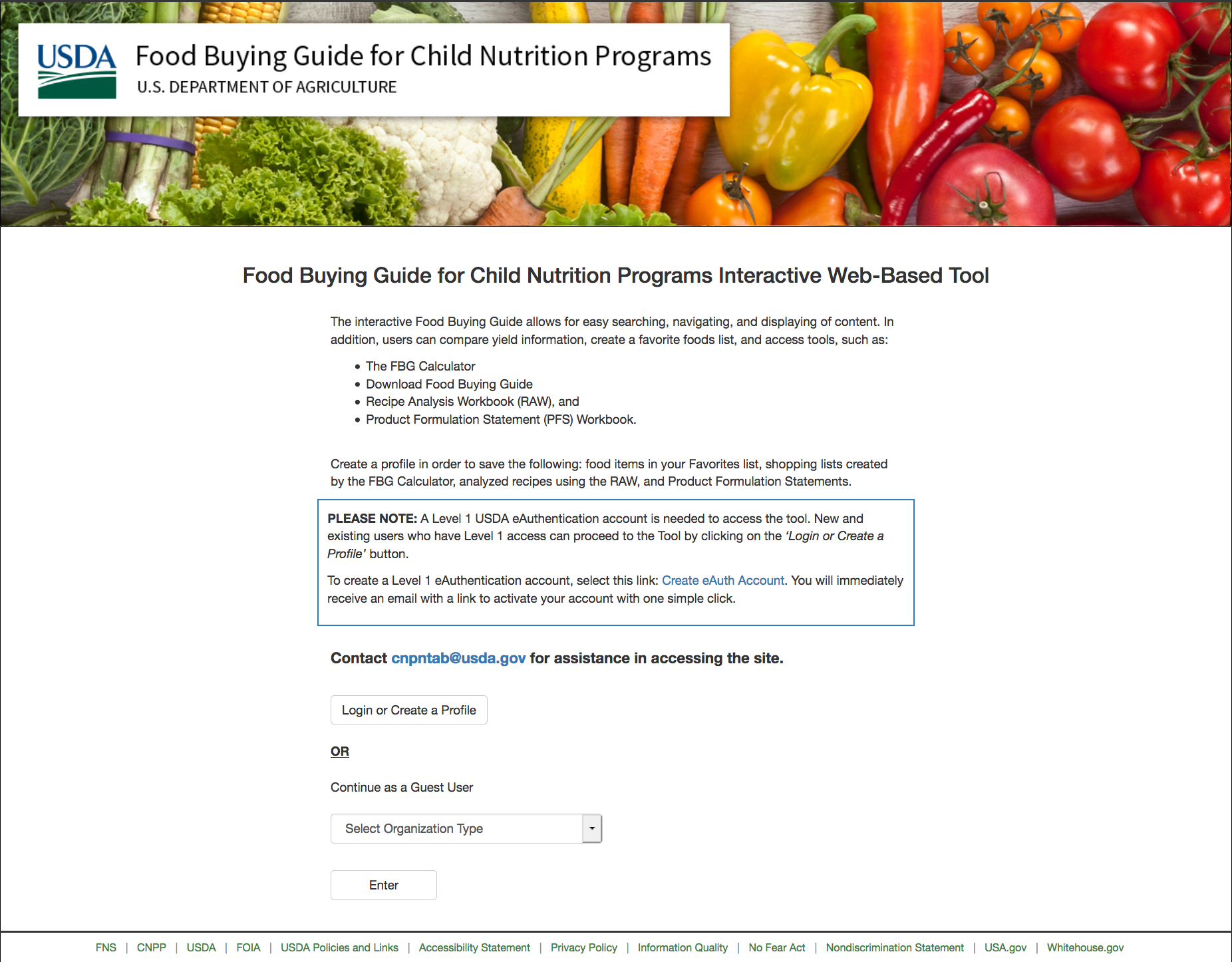The USDA Food Buying Guide is like an instruction manual for building a creditable CACFP meal. It tells you exactly how much you need of exact food items to ensure that you purchase and prepare enough food. It used to be that every CACFP sponsor had a giant binder with the Food Buying Guide in print. Now the basic calculations for food purchasing and preparations can be done through a web-based interactive tool or mobile app and there are lots of extra bells and whistles to enhance your CACFP program.
Let’s start with the basics. You can search for foods both broadly (carrots) or more specifically (fresh carrots) and within food components. With the comparison feature, you can see up to four similar items side-by-side to see which one works best for your menu planning needs (for example, canned vs fresh carrots). And the favorite foods list makes it easy to come back to the foods that you use often. These great resources will help simplify your shopping lists with easy access to food yields on all creditable food items. By using these guides, you can see both the purchase quantities as well as the amount that goes towards the meal pattern requirements for each food item.
And now the fun stuff!
- Grocery Lists
The grocery list function lets you create a custom shopping list. It requires that you input the following information:
- Food items that you are going to serve
- Serving sizes for all age groups
- Number of children in each age group
You can even enter the amount of the product that you have in your storeroom! Here’s an example from a child care center that is serving chicken drumsticks for lunch. They have 20 children that are receiving one drumstick and 20 children that are receiving two drumsticks.

You can see that the “exact quantity” needed rounds up to 14 lbs. Since the user entered that there are already 2 lbs on-hand, the Grocery List will add 12 lbs to the shopping list.
Once you are done entering food items and planned quantities, you can print the grocery list as a PDF and use it to make your purchases.
- Recipe Analysis Workbook
The Recipe Analysis Workbook is a wonderful tool for CACFP operators that make their own meals in-house. It helps the foodservice staff know how much food to prepare and provides an extra level of documentation for state agency reviews.
With the Recipe Analysis Workbook, you input the food items used from the Food Buying Guide, the amount that you use and how much the recipe yields. The Recipe Analysis Workbook then figures out how your recipe credits for the CACFP! Here is an example from a chicken enchilada recipe:


- Product Formulation Statement Workbook
Do you struggle to get product formulation statements from food manufacturers? You may wish to direct them to the Product Formulation Statement Workbook. This workbook helps vendors show how their products contribute to the USDA’s meal requirements. Each PFS must include the following information:
- Product Name
- Product Code
- Serving or Portion Size
- Creditable Ingredient(s)
- Information to determine Meal Pattern contribution
You can add food items to the PFS in the same way, using the search feature on the site. Once you have entered the food item, the yield is auto-populated. You must add the raw portion for the creditable ingredient and the tool will calculate the creditable amount. Please note that meats and grains will be automatically rounded down to the nearest 0.25oz, and fruits and vegetables will be rounded down to the nearest 1/4 cup.

